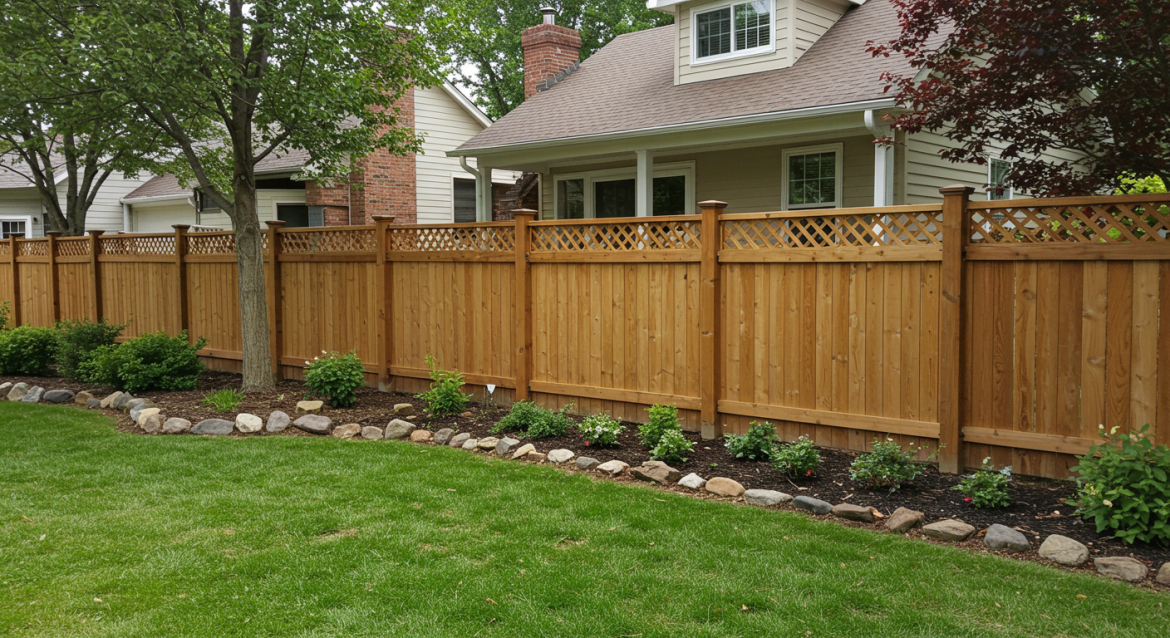# Fence Regulations & Permits in Lake County: Homeowner Guide
Planning to install a new fence in Lake County? Before you start digging, it’s crucial to understand the fence regulations and permit requirements in your area. This guide will help homeowners in Grayslake, IL, and surrounding northwest suburbs navigate the process, ensuring your fence project is compliant and hassle-free.
Thinking about installing a fence in Lake County, IL? Navigating **fence regulations IL** and securing the necessary **fence permits Lake County** can be confusing. This guide provides homeowners in Grayslake, as well as nearby communities like Glencoe, Wilmette, and Lake Forest, with the essential information to ensure a smooth and compliant fence installation.
## Understanding Fence Regulations in Lake County
Navigating fence regulations involves understanding a complex web of zoning laws and codes. Each municipality within Lake County, from Waukegan to Lake Geneva, may have its own specific set of rules. These rules generally cover aspects such as:
* **Height Restrictions:** Fences are usually limited to a maximum height, which varies depending on the location (front yard, backyard, side yard).
* **Material Restrictions:** Some municipalities dictate allowed fence materials (e.g., wood, vinyl, metal) to maintain neighborhood aesthetics. Chain-link fences are sometimes restricted or prohibited in front yards.
* **Setback Requirements:** Fences typically need to be set back a certain distance from property lines, sidewalks, or easements.
* **Style Requirements:** Certain styles of fencing might be restricted to ensure uniformity within the neighborhood. For example, you may need to consider your neighbor’s fence style or be limited to certain colors.
It’s important to note that these regulations can be found within the municipal code of your city or town. Websites like Municode or your town’s official website often have these details available to you.
## Do You Need a Fence Permit in Lake County?
Generally, yes. Most fence installations in Lake County require a permit. Even minor fence repairs or replacements might need a permit, depending on the scope of the work. To find out if you need to apply for a **fence permit Lake County**, you must contact your local building department or zoning office. They can provide clarity on specific requirements for your project.
Failing to obtain the necessary permits can result in fines, delays, or even the requirement to remove the fence. Therefore, understanding the process is a crucial step in the planning phase.
## How to Apply for a Fence Permit in Lake County
The application process for a fence permit usually involves these steps:
1. **Contact Your Local Building Department:** Start by reaching out to your city or village’s building department. They can provide you with the correct application forms and a detailed list of required documents.
2. **Gather Required Documents:** Common documents include:
* Site plan showing property lines and fence location.
* Fence specifications (height, materials, style).
* Property survey.
* Homeowners Association (HOA) approval (if applicable).
3. **Submit the Application:** Once you have all the necessary documents, submit your application to the building department.
4. **Wait for Approval:** The building department will review your application, which can take several weeks.
5. **Schedule Inspection:** After your fence is installed, you may need to schedule an inspection to ensure it meets all local regulations.
## Specific Considerations for Northwest Suburbs and Illinois Climate
When planning your fence installation, keep in mind the specific considerations for your region:
* **Illinois Climate:** The freeze-thaw cycle in Illinois can affect fence posts and materials. Choose weather-resistant materials and ensure proper installation to prevent damage.
* **HOA Rules:** If you live in a community with a Homeowners Association (HOA), be sure to obtain their approval before starting your project. HOAs often have specific rules regarding fence styles, materials, and colors.
* **Underground Utilities:** Call JULIE (Joint Utility Locating Information for Excavators) at 811 before digging to avoid damaging underground utilities. This is a free service.
* **Neighborly Communication:** While not a requirement, communicating your fencing plans with your neighbors can prevent future disputes.
## Choosing the Right Fence for Your Needs
Selecting the right fence involves considering your needs, budget, and local regulations. Popular fence materials include:
* **Wood:** Offers a classic look and privacy, but requires regular maintenance.
* **Vinyl:** Low-maintenance and durable, but can be more expensive than wood.
* **Metal:** Provides security and a modern aesthetic, but can be susceptible to rust.
* **Aluminum:** A great choice for ornamental fencing, it is also a cost-effective option.
Careful consideration of material is critical to ensuring longevity and neighborhood aesthetics.
## Conclusion
Installing a fence can significantly enhance your property’s value and security, but understanding **fence regulations IL** and obtaining **fence permits Lake County** is paramount. By researching local requirements, gathering the necessary documents, and following the application process, you can ensure a smooth and compliant fence installation. Navigating these complexities can be daunting. For expert advice and professional fence installation services in Grayslake, IL, and the surrounding areas, contact Angel Fence today for a free consultation. Let us handle the permitting process and ensure your fence meets all local regulations.
